![]()
Middle East Forum | by Aymenn Jawad Al-Tamimi and Oskar Svadkovsky
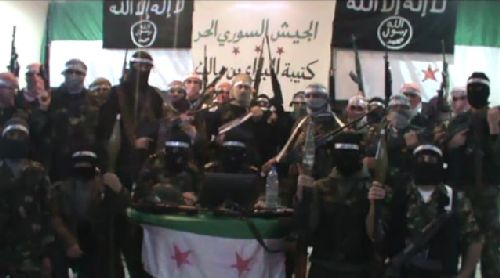
Capture from a video, purportedly from Homs, that shows Free Syrian Army soldiers with members of al-Qa'ida. In the background, alongside the banners of the Free Syrian Army, there are the familiar black flags of al Qaeda's Iraqi branch, with the black background and white Arabic script, featuring the Shahadah on top and a circular logo bearing the words "Allah, Rasul Mohammed." The black background indicates the Islamist militants' mindset: they are fighting in Dar al-Harb against an infidel regime. This point is corroborated by the fact that they identify the Free Syrian Army with the "mumineen" ("believers"). (Source: youtube)
Originally published in The American Spectator.
The iron fist against “terrorist gangs” as promised by Bashar Assad got off to a fairly impressive start two weeks ago. Homs — the Benghazi of the Syrian rebels — has been subjected to massive and sustained shelling for days, causing hundreds of fatalities among the defenders. With the fist heading for its third week, however, the spectacular artillery barrages seem to have delivered little.
This is not the first time during the uprising that the Syrian army has stormed urban areas. In July and August, the army recaptured Hama, Deir ez Zor, and Latakia after these had been taken over by crowds of protesters reinforced by army defectors.
However, while it took the Syrian army approximately five days to regain control of Hama and two days to take Deir ez Zor, Latakia turned into a drawn out battle that lasted several days. Homs was shelled, but an all out assault failed to follow.
This time Homs is clearly the primary objective. But once again the shelling failed to be backed by meaningful advances of ground forces. Whatever the reason the Syrian army is always struggling in Homs, by now, the death tolls in Homs have dropped to the low dozens as many locals have apparently fled the city. Large chunks of Homs have become ghost towns populated primarily by insurgents and a particularly hardened version of local residents. The “shock and awe” effect of the first days is fading away as the remaining population is getting used to the daily bombardment. “We are safe. They can’t hit here,” said a local guide to a BBC reporter as shells and mortars were falling all around.
Elsewhere, according to Reuters, many opposition centers have been transformed into a bunch of mini-Homs and half-Homs. All of them seem to be subjected to the same kind of artillery siege and blockade, but Zabadani was apparently the only prominent opposition stronghold to fall into the regime’s hands until now. An attack on Rastan was repelled. A CNN reporter, who traveled to Northern Syria, found much of its countryside under the control of the opposition; and while the fighters are waiting for Bashar’s tanks to appear in force every moment, these are yet to come. In fact, the situation may be no better in other parts of Syria, but many areas are harder to reach for reporters (the Idlib province in the north is adjacent to Turkey).
There is an obvious danger for the regime in projecting weakness for so long. Many Sunni soldiers are deterred from switching sides only by the perception that the regime is strong enough to defeat the rebels. Failure to take over Homs anytime soon is likely to trigger an avalanche of defections. Homs is a must now. It’s become the bare minimum for the survival of the regime.
This is not to say that the opposite is true, as throughout this uprising the rebels have demonstrated a high ability to recover and re-infiltrate lost areas. Some besieged towns were repeatedly reported to have already been brought under the regime’s control in the past. For example, this is the second time the army is storming Rastan.
Large chunks of Syria, including the cradle of the revolution in Deraa, are part of a massive tribal belt stretching from the Persian Gulf across several countries in the region, with Bedouin tribes reportedly at the forefront of the armed resistance in many areas. The tribal dimension of the uprising makes for a curious historical analogy. Bashar’s situation is beginning to resemble the military campaign waged by the Emperor Tiberius’ adopted son Germanicus in 15-6 CE, who unsuccessfully tried to subdue under Roman rule the German tribes that lived beyond the Rhine. Even when Germanicus was able to defeat the Germans in an engagement, the tribes were able to re-group so quickly that in the end he could only achieve short-lived, skirmish victories: true conquest was simply impossible.
The prevailing expert opinion at the beginning of the current campaign against the rebels used to be that the rate of defections was rather low and the bulk of the armed forces remained intact. For example, in his recent article on Syria, Israeli analyst Jonathan Spyer estimated that the regime can still marshal 300,000 troops, as opposed to at most 20,000 guerrillas in the Free Syrian Army. Yet, after two weeks of an iron fist that appears unable to decisively hammer the opposition anywhere, one question is begging to be asked: Where exactly is Bashar hiding his 300,000 strong army? The Syrian army may have more troops than it appears from its muddling in Homs, given that it apparently pursues offensives on several fronts at once. Yet, the army is clearly severely short on ground-troops. For it is no longer capable of being present in all areas of revolt nor mustering enough forces anywhere to smash the opposition with a decisive local Blitzkrieg.
Two weeks ago Mustafa Ahmad Al-Sheikh, a high level defector, who has fled to Turkey, claimed that the Syrian army was so depleted by defections that he expected it to collapse by the end of this month. This assessment was dismissed by many as rebel propaganda, but now Al-Sheikh is starting to look closer to reality than his critics. In fact, not so long ago the same Al-Sheikh estimated that he needed a whole year to topple the regime with guerrilla tactics and at that time he was not treated as a rebel propagandist.
With each passing day that the Syrian army remains bogged down in Homs and elsewhere, the graver the consequences for the regime. Two weeks of intense bombardment televised on Al-Jazeera and other Arabic channels have already triggered a tsunami of outrage across the Arab world. Weapons and foreign fighters are reported to be streaming into Syria from neighboring Arab countries and Turkey.
More ominously for the regime, it has finally witnessed jihad declared against it by radical Islamists, including al Qaeda. The religious and sectarian dimensions of the conflict are clearly escalating. A good example of the latest trend is a video, purportedly from Homs, that shows Free Syrian Army soldiers with members of al-Qa’ida.
In the background, alongside the banners of the Free Syrian Army, there are the familiar black flags of al Qaeda’s Iraqi branch, with the black background and white Arabic script, featuring the Shahadah on top and a circular logo bearing the words “Allah, Rasul Mohammed.” The black background indicates the Islamist militants’ mindset: they are fighting in Dar al-Harb against an infidel regime. This point is corroborated by the fact that they identify the Free Syrian Army with the “mumineen” (“believers”).
In the Missile East, failure to trumpet one’s strength can have severe consequences. You cannot promise to come down with an iron fist and then fail to deliver. By now even roosters in Homs are no longer impressed with Bashar’s artillery. If there is still some of this iron fist we haven’t seen until today, Assad Junior had better show it now. Otherwise, the chickens may soon come Homs to roost for his regime.
Aymenn Jawad Al-Tamimi is a student at Brasenose College, Oxford University, and an adjunct fellow at the Middle East Forum. Oskar Svadkovsky is a computer networking professional based in Tel Aviv, and the owner of the Happy Arab News Service blog. He graduated in Indian and Chinese Studies at the Hebrew University of Jerusalem.



 RSS
RSS

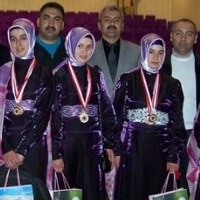
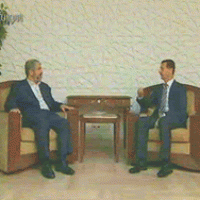

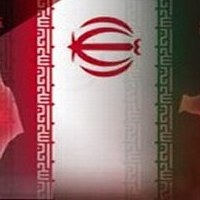
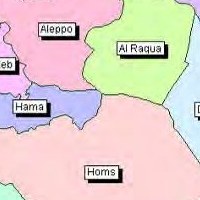




Bashar’s ‘Iron Fist’ http://t.co/A3GGPZ1r
Bashar’s ‘Iron Fist’ http://t.co/A3GGPZ1r